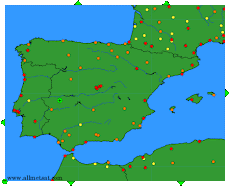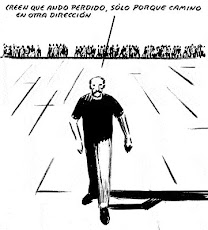jueves, 3 de octubre de 2013
AIRSPACE INFRINGEMENT: A SKYBRARY ARTICLE
A SKYbrary article.
Airspace Infringement
Source: www.skybrary.aero
Categories: Airspace Infringement, General Aviation, Operational Issues
Description
Airspace infringement occurs when an aircraft enters notified airspace without previously requesting and obtaining clearance from the controlling authority of that airspace, or enters the airspace under conditions that were not contained in the clearance.
Notified Airspace includes controlled airspace structures in ICAO airspace classes A to E, such as Airways, Terminal Control Areas (TMAs), Control Zones (CTRs) or aerodrome traffic zones (ATZ) outside controlled airspace, as well as restricted airspaces, such as danger areas, restricted areas, prohibited areas and temporary reserved airspaces (TRA).
It should be noted that VFR traffic cannot infringe class E airspace because under ICAO rules neither an ATC clearance nor radio communication is required to enter or operate within it, unless filed national differences call for one or the other (or both). Traffic following instrument flight rules (IFR) can infringe class E airspace when not in receipt of a clearance to enter it.
Although VFR flights do not require clearance to enter Class E airspace, serious incidents have occurred between VFR and IFR flights in such airspace due largely to limitations in the “see-and-avoid” principle. Therefore this type of incident is also being addressed by airspace infringement prevention initiatives.
All classes of aircraft are prone to airspace infringement, but the majority of incidents recorded involve General Aviation. This is unsurprising, as most GA VFR flights are conducted outside controlled areas and zones, and are in general flown by less trained and experienced leisure pilots; whereas IFR flights are usually conducted within controlled airspace and carried out under the supervision of ATC units.
Effects
• Mid-Air Collision
• Loss of Separation from other aircraft. An infringement leading to loss of separation may also cause Loss of Control due to wake vortex encounter and even injuries to passengers or crew when violent manoeuvres are needed to avoid the other aircraft.
• Disruption to flight operations. An infringement can significantly increase controller and pilot workload due to the need to break-off an approach, change aircraft sequence for landing or implement other contingency measures. Any disruption to flight operations is likely to have adverse environmental and economic impact due to increased fuel burn by aircraft, both in the air and on the ground, which are subject to delays .
• Exposure to danger from military hazards, e.g. radiation, gun-firing or manoeuvring high-performance aircraft.
• Perceived security risk of flight contrary to clearance which may result in a military response.
• Disruption of military or other special activities within restricted, danger or prohibited airspace.
Defences
• Enhanced Flight Information Service (FIS), based on the use of radar, provides services to VFR flights outside controlled airspace. Examples include Traffic Service (provides the pilot with traffic information on conflicting aircraft) and Deconfliction Service (provides the pilot with traffic information and deconfliction advice on conflicting aircraft) provided in the UK airspace.
• Accurate aircraft navigation systems, including conventional, BRNAV and PRNAV systems
• Hand held or mounted GPS equipment used in VFR flying on board light aircraft, provided that the pilot has a proper understanding of the right way to use it and is aware of its limitations.
• Use of aircraft transponders, especially those associated with encoding altimeters which enable ATC to identify traffic and can facilitate TCAS-based avoiding action.
• Ground based Safety Nets, such as Short Term Conflict Alert (STCA) and Area Proximity Warning (APW) that can alert controllers to hazardous sitations and help mitigate the effects of infringements.
• Knowledge of and strict adherence to RTF procedures.
Typical Scenarios
• Aircraft flying outside controlled or restricted airspace, etc. enters the airspace without clearance due to:
o Lack of awareness of existence of the airspace (lack of, or out-of-date maps, deficient briefing, etc.); or,
o Lack of awareness of the activation of airspace restriction; or
o Poor navigation performance (equipment or technique); or,
o Poor air-ground communication technique; or,
o Lack of understanding of procedure for obtaining clearance to enter.
• Aircraft flying outside controlled or restricted airspace enters it with or without awareness as a result of adverse weather avoidance
• Aircraft flying outside controlled or restricted airspace enters it as a result of misunderstanding or misinterpretation of ATC instructions or clearance.
Contributory Factors
• Poorly equipped aircraft (navigation and communication equipment).
• Inexperienced or inadequately trained pilots.
• Poor pre-flight preparation (out-of-date or inappropriate maps, NOTAM briefing, etc.).
• Over-reliance on GPS equipment
• Adverse Weather.
• Absence of enhanced Flight Information Service.
• Airspace design which constrains uncontrolled air traffic into corridors of limited horizontal and/or vertical dimension.
• Unfavourable attitude of ATC controllers to VFR flights, leading to poor comunication.
• Routine (assumption that airspace restrictions on a familiar route will not change) or Complacency.
Solutions
• Improve airspace infringement awareness;
• Improve pilot's navigation and communication skills by raising the standard of pilot training, emphasising the importance of and developing the ability to ensure:
o Effective Pre-flight briefing;
o Accurate Navigation;
o Appropriate and effective Air-Ground communications;
• Enhance Flight Information Services to VFR flights based on the use radar in areas where airspace infringement is common;
• Implement safety nets, such as Area Proximity Warning (APW) that can alert controllers of potential or actual infringements;
• Improve the availability and accessibility of aeronautical and meteorological information to VFR flights;
• Review airspace design where repetitive airspace infringement occur with the objective of removing features which appear to have contributed to such incidents;
• Encourage or mandate the use of high quality aircraft systems for navigation and communication, including transponders;
• Improve cooperation at local level between ATS providers, GA establishments and the military.
SKYbrary Toolkit
We recommend visiting and experiencing the Airspace Infringement Prevention Toolkit
Related articles and further readings were not included but are available in the skybrary article.
This event is very likely to happen in the Madrid-Barajas International Airport because of the unsafe operation that is implemented by the airport operator, AENA, and the Spanish Civil Aviation authorities, ever since it started to operate the four runways configuration.
In the Plan Director de Barajas defences to prevent airspace infringement are not clear, and an accident is likely to occur in case of human error (e.g., misoperation due to fatigue) or equipment failure (e.g., communications failure).
What would happen in Madrid-Barajas International Airport in case of airspace infringement? Visit MADRID-BARAJAS INTERNATIONAL AIRPORT HOT SPOTS MAP.
Suscribirse a:
Entradas (Atom)














